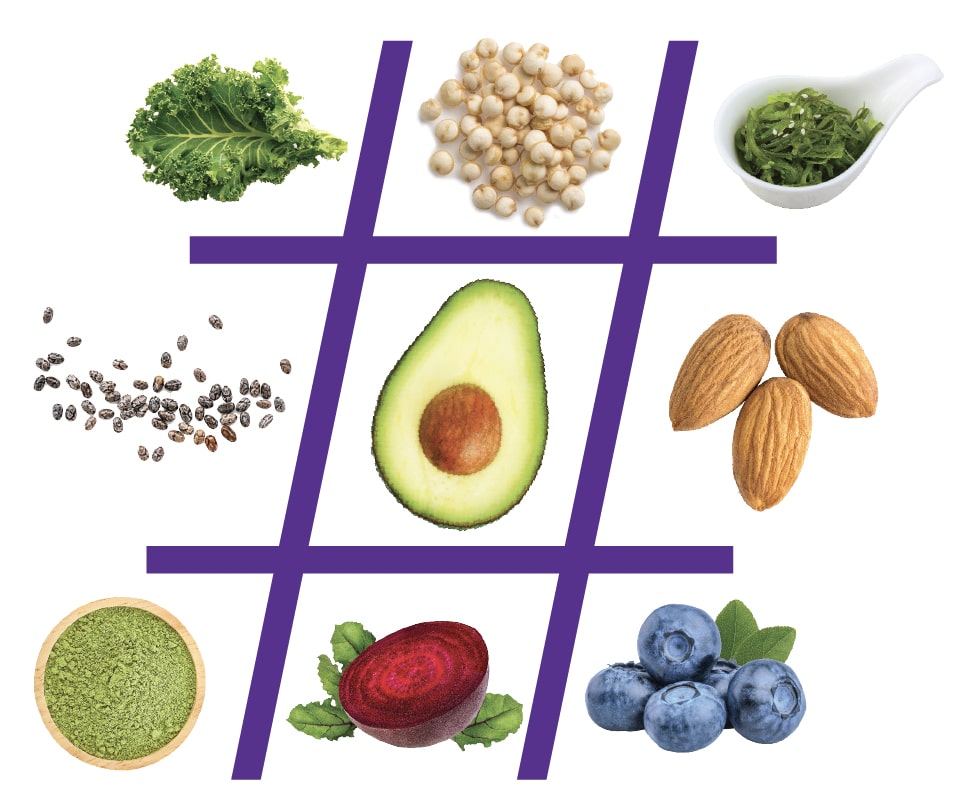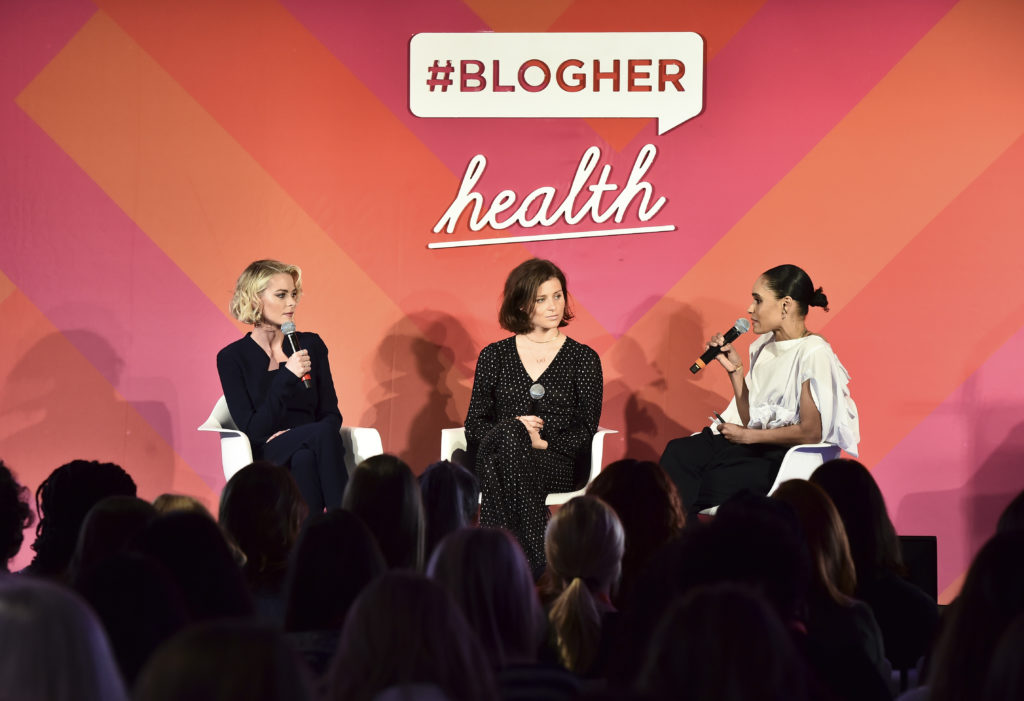Archive for February 2019
The World Needs More Fruits And Vegetables
Most dietitians agree that a healthier global diet would include people eating more fruits and vegetables. Just one problem with dishing out this advice: The world’s agricultural system does not grow enough fruits and vegetables to adequately feed a rising global population, according to Canadian-led research published in the journal PLOS ONE. Humans overproduce grains, sugars and fats at the expense of fruits and vegetables, which makes it nearly impossible for everyone to follow dietary guidelines.
Read MoreDiet Can Fight The Effect Of Fat Genes
Over the past few decades, researchers have shown that an individual’s
genetic makeup can play a big role in his or her propensity to gain weight and keep it on. For instance, one person may have a gene that makes him more efficient at converting food calories into body fat, while someone lacking this gene can apparently eat as much as she wants without packing on a single pound. Maddening for some, to be sure. But now it seems that dietary choices may have the power to override certain genes associated with body weight.
Question Of The Month
Like the milkman used to do, more and more retailers will deliver groceries to your doorstep. According to data analytics company Nielsen, 70% of American consumers will do some of their grocery shopping online in the next 5–7 years. How is this shift in food-purchasing behavior going to influence eating habits?
Read MoreHashtag-Worthy Foods
In the age of Instagrammable food shots and food “influencers,” people increasingly turn to social media for advice on what to eat. And it turns out we still can’t get enough of avocado toast and that South American grain. A social media analysis from the food and nutritional consultancy New Nutrition Business showed that—in a list of 20 items marketed as healthy—avocado, almonds, blueberries, quinoa and kale garnered the most social media activity between 2017 and 2018.
Read MoreHigher Vitamin D Levels Linked To Better Fitness
There’s another reason to make sure you’re getting enough of the sunshine vitamin: High levels of vitamin D in the blood are now linked with better fitness, according to research from the Virginia Commonwealth University School of Medicine. In the study, published in the European Journal of Preventive Cardiology, 20- to 49-year-olds with better vitamin D status also tended to have greater cardiorespiratory fitness, a measure of aerobic fitness often determined by measuring maximal oxygen consumption (VO2max) during exertion.
Read MoreGo Fish To Nourish A Baby Bump
Moms-to-be should visit the fishmonger more often. In a study published in the journal Pediatric Research, scientists in Finland collected nutrition information from 56 pregnant women using food diaries; the scientists then measured blood levels of long-chain polyunsaturated fatty acids (aka omega-3 fats) in both mothers and babies when the newborns were 1 month old.
Read More5 Ways to Eat to Beat Diabetes
The numbers are startling: More than 100 million American adults have diabetes or prediabetes, meaning they have poor blood sugar control, which, if untreated, often leads to type 2 diabetes within a few years. It’s therefore not surprising that a great deal of research is trying to suss out how eating habits affect diabetes risk. Here’s what the white coats have uncovered of late:
Read MoreTop Burger Chains Get Failing Marks on Antibiotics
Maybe when people order a hamburger, they should be asked, “Would you like some antibiotics with that?” In a collaborative report from several organizations, including the National Resources Defence Council and Consumer Reports, only two out of 25 fast-food and fast-casual restaurant chains—Shake Shack and BurgerFi—received an A for their policies on antibiotics in beef used in their burgers. The vast majority—including heavy hitters like McDonald’s and Burger King—got a resounding F.
Read MoreCan’t Resist the Cookie Jar? Blame the Makeup of Your Brain
It appears that the way our brains are hardwired can play a big role in eating habits and long-term weight loss success, according to research published in the October 2018 issue of Cell Metabolism. In the study, Canadian researchers ran MRI brain scans on 24 people while showing them images of different foods. Participants then began a 1,200-calorie-a-day diet in a weight loss clinic.
Read MoreCrunch Your Way to a Six-Pack
Calorie counts notwithstanding, research keeps showing that nuts can help in the battle of the bulge. One example was a study presented at the American Heart Association’s Scientific Sessions 2018 in Chicago. In that experiment, researchers from the Harvard School of Public Health found that eating a daily 1-ounce serving of any type of nut—including peanuts and nut butters—in place of calories from low-nutrition foods was associated with a lower risk of long-term weight gain and obesity in more than 125,000 adult men and women.
Read MoreIDEA Member Spotlight
MELISSA LOWE, MS • Member Since 1987 • Columbus, Ohio
“I’ve had quite a journey in fitness,” says Melissa Lowe—from the days her mother would take her kids on long walks to teaching aerobics to put herself through nursing school to opening her own Pilates studio after a 36-year nursing career. She joined IDEA in 1987 and has attended IDEA World nearly every year since.
Question Of The Month: Physical Activity Classes in College?
Are you training college students on campus, or is your facility offering physical activity programs for college students at a local campus? If yes, does the college require physical activity courses, or are they elective? In view of your experience working with college students, do you support a requirement for physical activity classes in college?
Share your experiences teaching at local colleges. We want to hear from you! Email executive editor Joy Keller, jkeller@ideafit.com.
Read MoreCollege Physical Activity Classes
Findings from a recent study may lead to more opportunities for fitness professionals to teach at college campuses. Evidence suggests that requiring physical activity classes in college encourages sedentary students to become more active, while elective classes simply support those who are already active.
Read MoreSitting Is Not the New Smoking
The evidence is definitive. Risks of smoking far outweigh the health dangers of a sedentary lifestyle. It’s important to raise awareness of the hazards of inactivity, but distorted information about risks of behavioral choices can confuse the public. “The simple fact is, smoking is one of the greatest public health disasters of the past century. Sitting is not, and you can’t really compare the two,” said study author Terry Boyle, PhD, an epidemiologist at the University of South Australia, Adelaide.
Read MoreBody Image And Social Media
A recent study provides more evidence that body image suffers when young women view photos of attractive peers on social media.
Read MoreResistance Exercise and Heart Health
“People may think they need to spend a lot of time lifting weights, but just two sets of bench presses that take less than 5 minutes could be effective [in reducing heart disease risks], according to study author DC Lee, PhD, associate professor of kinesiology at Iowa State University, Ames.
Researchers analyzed data collected over 19 years from more than 12,000 male and female adult participants in The Aerobics Center Longitudinal Study conducted at the Cooper Clinic™ in Dallas.
Read MoreMost Adults Misjudge Their Physical Activity Levels
A recent cross-cultural study shows that most adults do not accurately estimate their physical activity levels and that Americans tend toward extremes when assessing their behavior. Researchers from the U.S., the U.K. and Holland collaborated on the study to compare self-reported levels of activity by adults aged 18 through older adulthood against actual data harvested from activity trackers.
Read MoreGrowth in Yoga and Meditation Practice
Americans continue to turn to yoga and meditation as leading ways to improve health, according to data from the National Health Interview Survey (NHIS). In 2017, yoga was the most commonly used complementary health approach, practiced by 14.3% of American adults (35.2 million). This represents an increase of almost 13 million practitioners since 2012. Meditation was the second most popular complementary health practice, used by 14.2% of adults. In growth, however, meditation outpaced yoga, with participation more than tripling from 2012 (4.1%).
Read MoreNew Physical Activity Guidelines for Americans
Any amount of physical activity—anytime, anywhere and by any means—is good activity, according to Brett P. Giroir, MD, assistant secretary of health for the U.S. Department of Health and Human Services. “As opposed to everything being harder and harder, it is actually easier to achieve the recommendations in the [new] physical activity guidelines,” Giroir said during a press conference.
Read MoreBlogHer: Through My Lens
Health. When you hear that word, what comes to mind? What about when someone says, “I’m living a healthy lifestyle?” What does that mean to you? What does it mean to the world? Today, when celery cleanses and keto diets are all the rage, it appears the meaning of health is directly related to one’s waistline. However, “health,” as defined by the World Health Organization, is “a state of complete physical, mental and social well-being and not merely the absence of disease or infirmity” (WHO 2019).
Read More


















